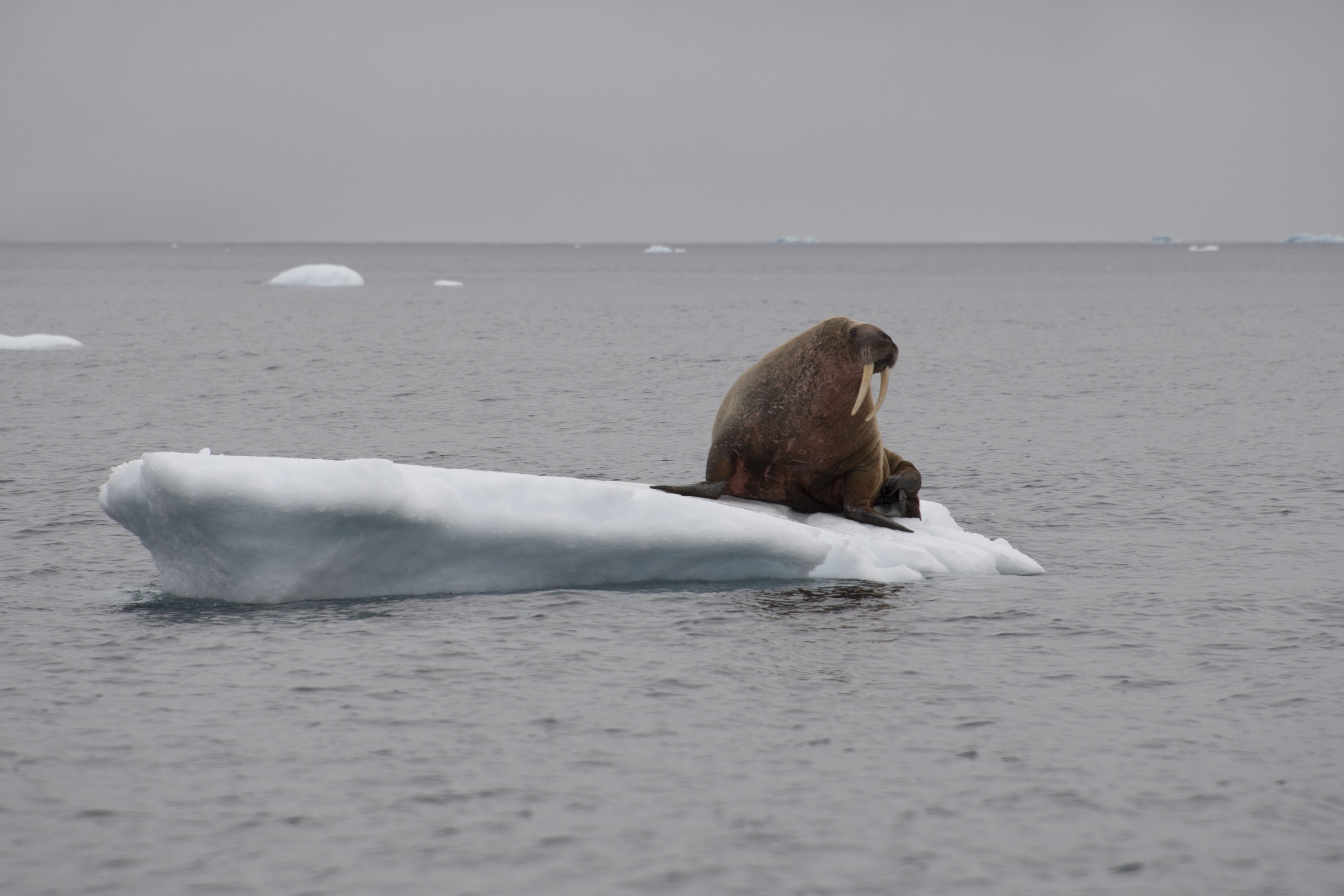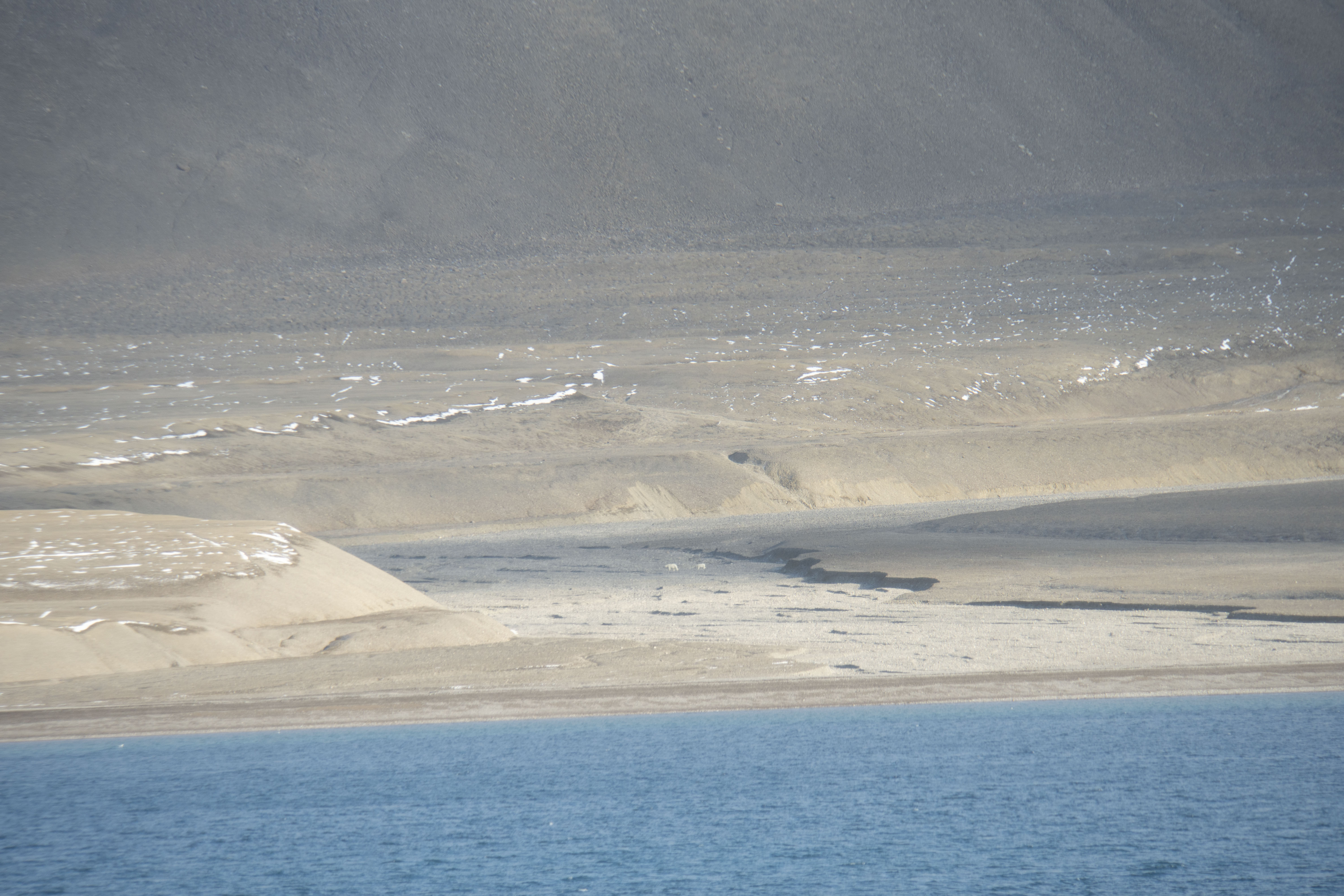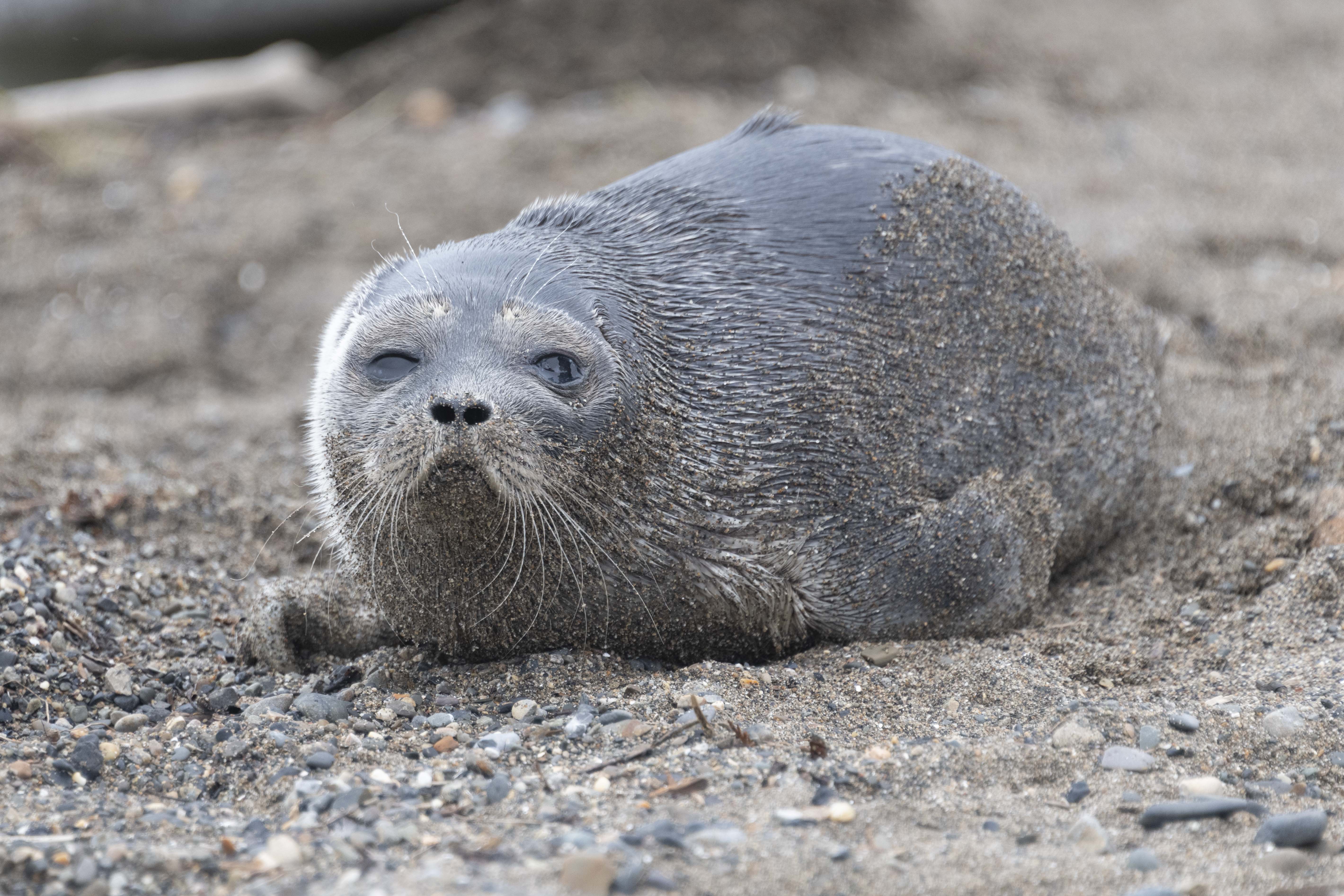Harry DeWolf sailors encounter wildlife in the Canadian Arctic
Navy News / November 2, 2021
During their recent transit through the Arctic, sailors onboard Her Majesty’s Canadian Ship (HMCS) Harry DeWolf, the first of Canada’s new Arctic and Offshore Patrol Ships, came in contact with more than just icebergs and vast open skies. Encounters with wildlife unique to the region was a highlight of this portion of their circumnavigation of North America.
One remarkable sighting began as nothing more than an odd dot on the horizon for sailors dispatched in Harry DeWolf’s Multi-Role Rescue Boat to photograph a particularly large ice berg.
“We slowly inched closer to this brown and black dot on the horizon, it just completely stood out from its surroundings,” said Medical Officer Major (Maj) Lili Zhang, one of the sailors in the boat. “We maintained a safe distance from it, but it was unmistakeable, a lone walrus was perched on a large slab of ice.”
The walrus didn’t seem to be as interested in the sailors as they were in it.
“Walruses are normally sighted in packs, so to see one all on its own was really rare,” Maj Zhang said, referencing an arctic wildlife field manual which has been passed around the crew.
Thanks to Sub-Lieutenant (SLt) Karen Winzowski who has supplied the crew with her own copy of an arctic wildlife field manual, crew members have been reading up on the wildlife they have encountered.
During the transit through Canada’s storied Northwest Passage on Operation Nanook 2021, every member of HMCS Harry DeWolf has had their own wildlife sighting story.
SLt Terrance Moy spotted an albatross from the bridge while on watch, confirming this after consulting the field guide.
“The wingspan was just incredible,” he said.
Sailors who went ashore on Herschel Island, Yukon, had a massive surprise in store for them – a lone seal pup was waiting to welcome them on the beach. While sailing through waters off of Nunavut, an Arctic fox was sighted by Image Technician Corporal Simon Arcand in Grise Fjord. Polar bears were seen from the bridge windows as the ship came to anchor in Terror Bay, and again sailors saw another polar bear on land during their hike on Beechey Island. And while HMCS Harry DeWolf was at anchor in Cambridge Bay, several beluga whales were spotted by the crew. It had been the first time in many years that whales came to Cambridge Bay, and soon dozens of local fishing boats began to swarm the harbour to hunt.
Whale sightings became more and more frequent as the ship began the transit down the coastline of British Columbia. By this time, SLt Winzowski had become the house wildlife specialist, presenting detailed information during the command update briefings on the types of whales the ship’s company may come across. Mitigating risk to mammals is a priority for the Royal Canadian Navy at sea, and while the RCN tries to avoid operating in known mammal migrating areas, aboard HMCS Harry DeWolf, if a whale is sighted in our path, engines are stopped to ensure the whales have rite of passage.
“Seeing arctic wildlife up close and interacting with it in a meaningful and respectful way, it’s truly a unique experience that gives you a lot of perspective,” Maj Zhang explained. “You read about the history of the land and its people interacting with wildlife up North, and (of) their utmost respect (for it) and conservation efforts.”
Maj Zhang noted that hearing about Northern life is very different from seeing it first-hand. The crew got the chance to view the animals up close, and then to witness community-wide whale hunts and the handing-down of knowledge, practices and respect for wildlife, which is at the core of Northern traditions and culture.
“We don’t pick up bones here,” said a community member to sailors during a hike in Grise Fjord, explaining the sacredness of the land. “Animals lives are sacred, especially those given to ensure our survival, and we leave bones where they have fallen.”
While the crew built relationships with Indigenous communities in Canada’s Far North, they also built understanding and further appreciation for respecting wildlife through meaningful interactions through their many lessons in the ice fields, on land and in the skies.


